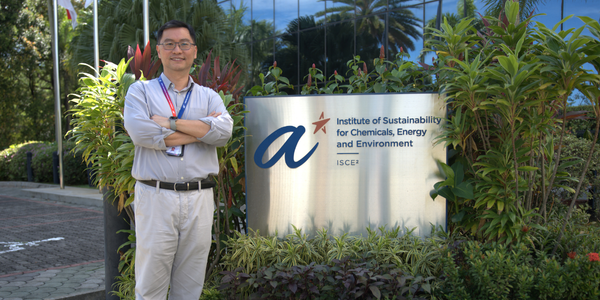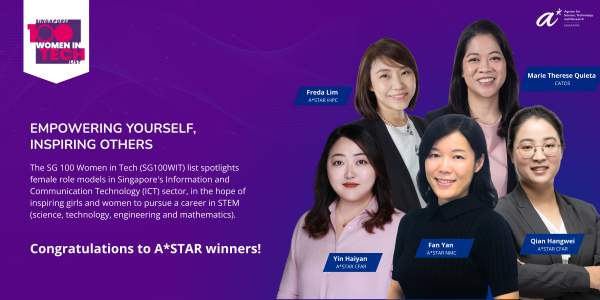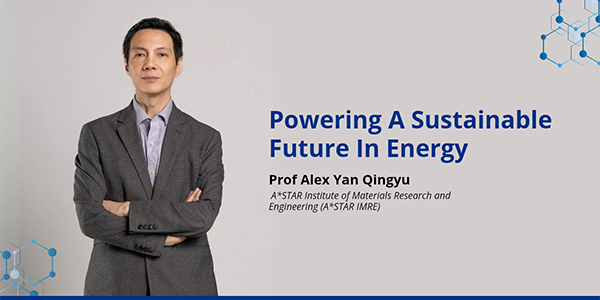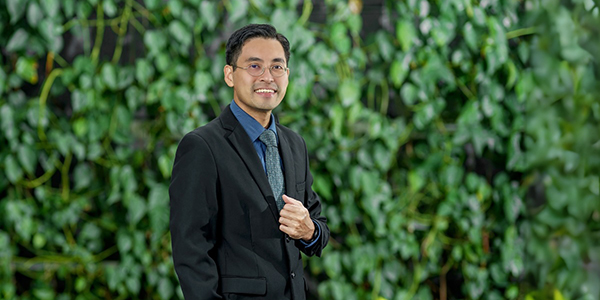FACES OF A*STAR
If You Feel Your Path Is The Right Fit, Press On!
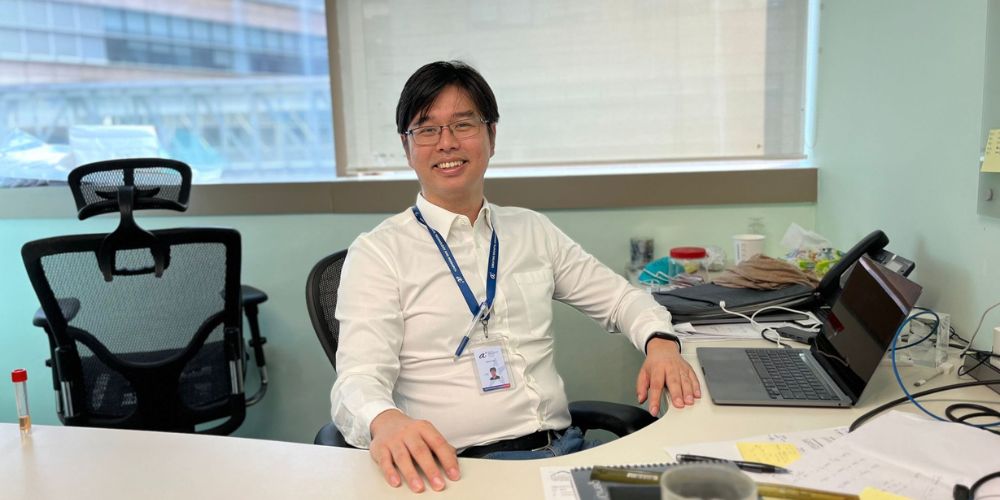 Dr Seow Yi Qi, Senior Research Scientist, Laboratory of Diagnostics Accessibility from A*STAR’s Genome Institute of Singapore (GIS)
Dr Seow Yi Qi, Senior Research Scientist, Laboratory of Diagnostics Accessibility from A*STAR’s Genome Institute of Singapore (GIS)
An A*STAR National Science Scholar, Dr Seow Yi Qi is passionate about molecular biology and how manipulating nucleic acids can help us diagnose and cure diseases.
With a deep passion for understanding the unknown hidden in our genetic code, Dr Seow works with the scientific community to advance our understanding of how nucleic acids can serve as powerful indicators of disease, health, and overall well-being.
Dr Seow completed his degree with the University of Wisconsin-Madison and furthered his studies in Molecular Biology at the University of Oxford. To pursue his ambitions in science and research, Dr Seow joined the Molecular Engineering Lab at A*STAR’s Institute of Molecular and Cell Biology and had the privilege to be mentored by the late Dr Sydney Brenner. Within A*STAR, he later moved to the Institute of Bioengineering & Bioimaging where he had the opportunity to run his own lab and develop translational work in nucleic acid diagnostic technologies. In 2023, he transited to the Genome Institute of Singapore (GIS) to further the research on nucleic acid diagnostic technologies.
In this feature article, Dr Seow shares insights into his life as a genomic scientist, and how his research work at GIS can help to improve human health.
1. Why did you embark on this field of work?
I have always wanted to pursue a career in research as I believe this is the best way for me to make an impact on the world. My younger self naively thought inventing a cure for diseases would be more rewarding than treating diseases individually. Thus, I have worked to identify problems that I could solve with my expertise in molecular biology.
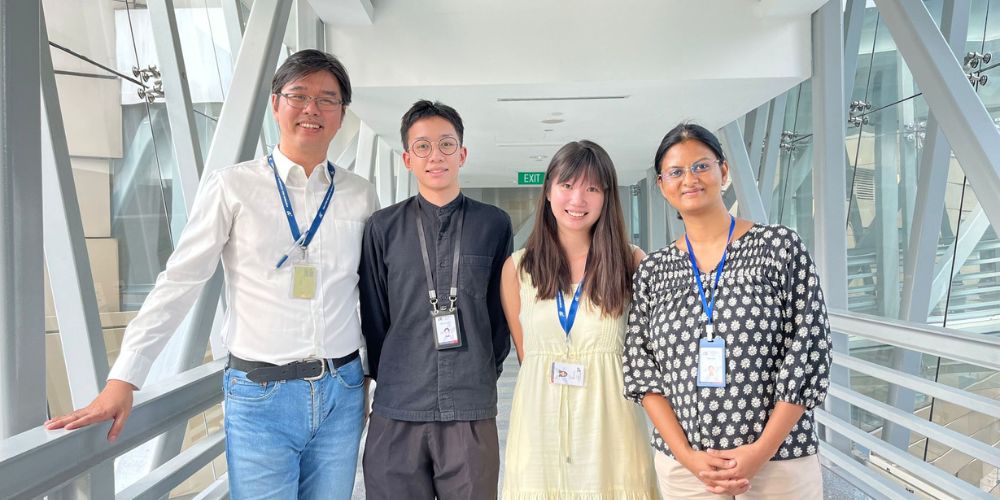 Dr Seow (first from the left) and his team
Dr Seow (first from the left) and his team
2. What’s a typical day like at work?
My work day usually involves discussions on experimental data and workplan with the team, keeping ourselves updated on the latest research findings, applying for grants and exploring ways to commercialise our inventions and innovations.
My team looks at nucleic acid biomarkers which are being identified by other groups. We then find out how we can make the detection of these biomarkers more accessible to patients or end users. For example, we use research techniques to discover the percentage of a subset of immune cells in blood. This will help detect the responsiveness of the immune system against tumours. We can convert the detection into a readily-deployed rapid PCR assay using existing laboratory equipment and this can potentially help to create a new clinical test that can be administered in a relatively affordable manner and allow patients to frequently conduct routine tests for better tracking of diseases.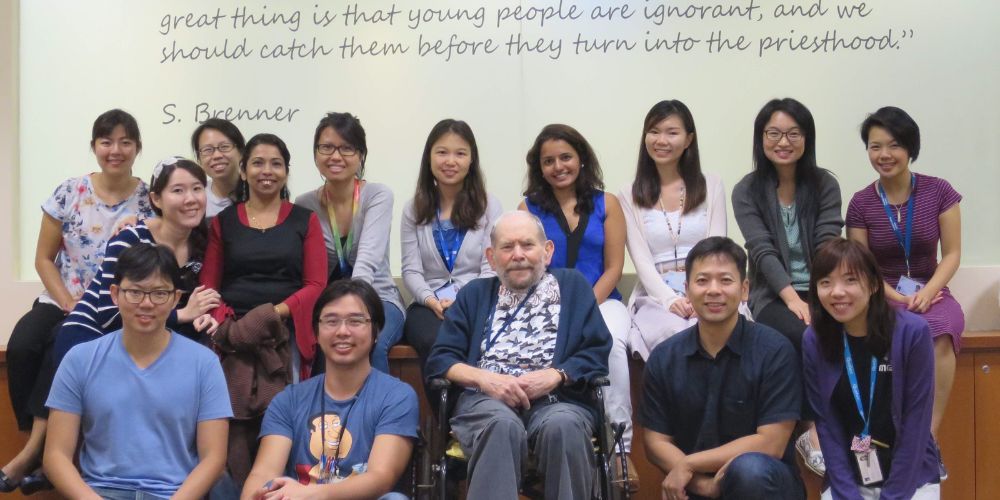 Dr Seow Yiqi (front row, second from the left) with members of the research team previously working under the late Dr Sydney Brenner (front row, centre).
Dr Seow Yiqi (front row, second from the left) with members of the research team previously working under the late Dr Sydney Brenner (front row, centre).
3. What keeps you motivated in your career?
The opportunity to create and invent new concepts that will hopefully be impactful to patients and end users keeps me motivated in my career. While a lot of good ideas may not be successfully implemented from bench to bedside, my ultimate goal is to ensure that the work I do has a tangible impact. I look forward to the day when I can proudly tell my children that the products they see in the future were developed by their father.
5. What advice you would give to those who have a passion for science?
What you are interested in or working on is not the final destination of your scientific journey. Science and technology comprise of academic research, industry, policy, intellectual property law and entrepreneurship. Continue to press on if you feel that research is the right fit for you and work hard to make the most out of your career.
I believe every setback or mistake is an experience to learn from.
6. Tell us more about your mentors in A*STAR!
There were many mentors in A*STAR that have inspired me. Starting from the late Dr Sydney Brenner, who showed me that age is not a limit to curiosity and inspiration. He encouraged exploration and allowed us to fail in a safe space. This has allowed me to learn many valuable lessons which I’ve carried over to my current role. Prof Tan Sze Wee, Assistant Chief Executive, Biomedical Research Council, A*STAR, has given me a great perspective on how to create value and change by connecting the right dots with other players in the ecosystem during the Covid-19 pandemic. I am most indebted to Dr Yang Yi Yan, who gave me the opportunity to demonstrate my capabilities by allowing me to lead a capable team. I am inspired by the care and concern she has for all her staff as she had the best interest of the people under her leadership. This is something that I will always remember when it comes to handling manpower issues. I am also very grateful towards Prof Patrick Tan, who welcomed me to A*STAR’s GIS and showed great support to my translational intents in terms of institutional resources. Lastly, I am also thankful to Prof Ng Huck Hui, Assistant Chief Executive, Biomedical Research Council, A*STAR, for his encouragement and the sharing of his perspective on engaging the ecosystem so as to maximise my impact and reach.
7. What are some of your interests outside of work?
I used to play rugby, cricket and had a hobby of performing magic tricks before I had kids. Now, my time is dedicated to my children, nurturing their curiosity and letting them find happiness in their lives.
8. If you can choose a superhero power, which would you choose
Having the power of precognition is great. I think one of the hardest questions is not asking what can be done, but what can be done that is both scientifically and commercially valuable. A lot of great inventions get stuck in the lab because there is no product-market fit product. For example, in the past, Blackberry and Nokia dominated the cell phone market. Not many people saw the uptake of the touchscreen smartphone back then. Thus, precognition would be a great power to have so we know what is worth developing and what is not.
Was this article helpful?
A*STAR celebrates International Women's Day

From groundbreaking discoveries to cutting-edge research, our researchers are empowering the next generation of female science, technology, engineering and mathematics (STEM) leaders.
Get inspired by our #WomeninSTEM

